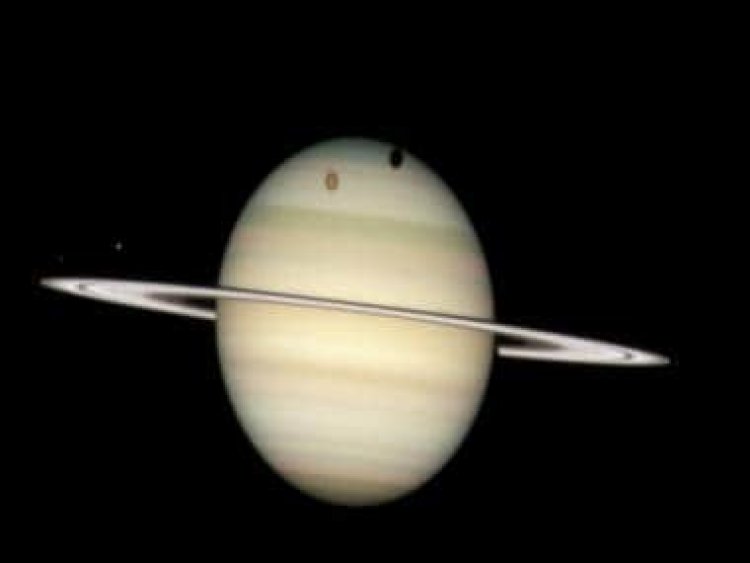The Vanishing Act: Why Saturn’s rings are disappearing
The Vanishing Act: Why Saturn’s rings are disappearing

It’s the most fascinating of all planets. Saturn, which is the second largest planet in our solar system, is nine times wider than Earth. What makes it stand out from the rest is not so much its size as its stunning rings. But these might soon be a thing of the past. Saturn’s rings are disappearing.
What do we know of Saturn’s rings?
Saturn has seven main rings and they make up a gigantic and complex structure. From edge to edge, the ring system would not even fit in the distance between Earth and the Moon, according to NASA’s science encyclopedia Solar System Exploration.
They are thought to be pieces of comets, asteroids, or shattered moons that broke up before they reached the planet, torn apart by Saturn’s powerful gravity. They are made of billions of small chunks of ice and rock coated with other materials such as dust.
The rings would look mostly white if you looked at them from the cloud tops of Saturn, and interestingly, each ring orbits at a different speed around the planet, according to NASA.
Most of us assume that the rings are a permanent feature of the planet. However, according to some experts, they could be about 100 million years old. This means that they might not have been part of the solar system for a larger part of the time when dinosaurs ruled the Earth, according to a statement by the University of Reading, the UK.
But various other models show that the rings have always been around Saturn since the solar system was formed around 4.571 billion years ago.

Why are the rings disappearing?
Scientists have known since the 1980s that Saturn’s innermost rings are eroding. The rings, which are made up of large chunks of ice, are falling on the planet as icy rain because of the planet’s intense gravity.
Now the downpour is happening at such a high rate that an Olympic-sized swimming pool of water rains on the gas giant daily, according to Space.com.
Earlier research has also shown that huge amounts of ring material are dropping onto the planet. Data from NASA’s Cassini spacecraft — which cruised right through the gap between Saturn and its rings 22 times in 2017 — had revealed that somewhere between 400 kilos and 2,800 kilos of icy rain is flowing onto the planet every second and heating its upper atmosphere, the report says.

How long until the rings disappear?
NASA’s mighty James Webb Space Telescope (JWST) is likely to investigate the disappearing rings.
Dr James O’Donoghue, who is leading the research on the planet, will track the destruction rate of the rings using the JWST and the Keck telescope in Hawai’i, among the world’s most powerful telescopes.
The two telescopes will monitor the “ring rain phenomenon” and how it fluctuates during one full season on Saturn, which lasts about seven Earth years.
“We’re still trying to figure out exactly how fast they are eroding,” Dr O’Donoghue said. “Currently, research suggests the rings will only be part of Saturn for another few hundred million years. This may sound like a long time, but in the history of the universe, this is a relatively quick death. We could be very lucky to be around at a time when the rings exist.”
The rings could disappear as quickly as 100 million years, or they might be around for 1.1 billion years, astronomers say. Some astronomers estimate that they might vanish in 300 million years.
“Right now we only have one very wide estimate,” O’Donoghue told Space.com. “We want to make more observations which narrow down this influx range.”
With inputs from agencies
Read all the Latest News, Trending News, Cricket News, Bollywood News,
India News and Entertainment News here. Follow us on Facebook, Twitter and Instagram.
What's Your Reaction?

























































